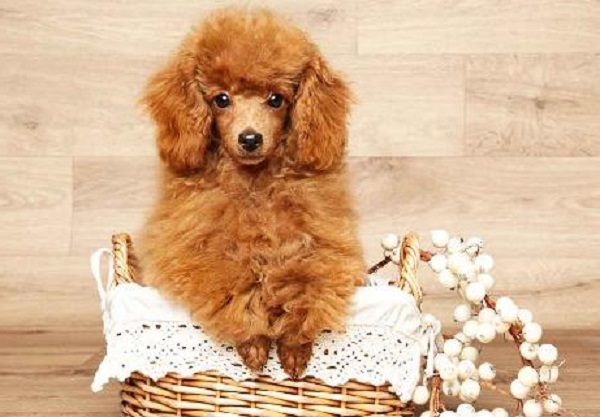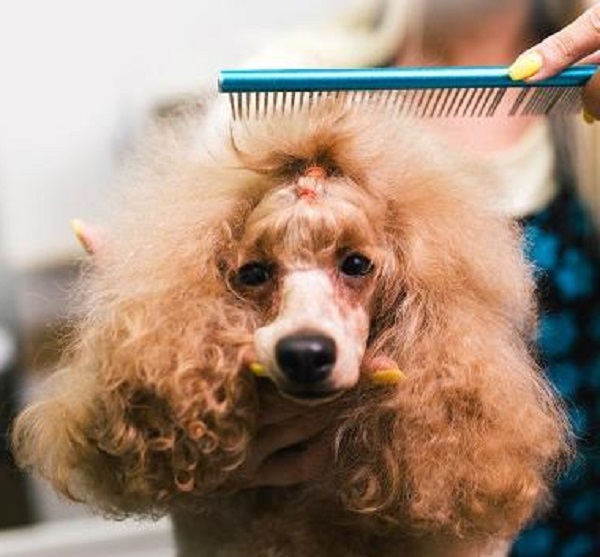Embark on a journey to discover the charm of the poodle, a dog breed celebrated for its intelligence and endearing nature. Recognized by its iconic curly coat and available in toy, miniature, and standard sizes, The poodle is more than just a visually appealing companion. Beneath its frilly exterior lies a dynamic and trainable athlete, forming strong bonds with humans. Join us as we delve into the world of the poodle, exploring its appearance, care, history, and the unique attributes that make it a beloved and versatile canine companion.

Some brief facts on Poodles
- Origin: Germany
- Sizes: Standard Poodle (over 15 inches), Miniature Poodle (10-15 inches), Toy Poodle (10 inches and under)
- Lifespan: 12-15 years
- Coat: Dense, curly, single-layer coat in various colors (black, white, brown, apricot)
- Temperament: Intelligent, active, eager to please, and affectionate
- Exercise Needs: Moderate to high
- Training: Highly trainable; excels in obedience and agility
- Grooming: Regular brushing; professional grooming every 4-6 weeks
- Health: Generally healthy, potential for hip dysplasia, Addison’s disease, eye problems, and Sebaceous Adenitis (SA) in Standards
- Notable Appearances: Featured in films like “100% Wolf,” “Best in Show,” “Look Who’s Talking Now,” and “Zoolander”
- Celebrity Enthusiasts: Lady Gaga, Mike Tyson, Betty White, Katharine Hepburn, Grace Kelly, Robin Williams, Ellen Degeneres, Cary Grant, Barbara Streisand
History of the Poodle
The poodle has a long and varied history, having originated in Germany more than 400 years ago. The German term for “puddle” is the source of the breed’s name. Originally, these dogs were excellent hunters’ water retrievers. The breed’s original variety, the standard poodle, was renowned for its intelligence and swimming prowess and served as both a devoted companion and a waterfowl retriever. Poodles have always had a characteristic hairstyle that strikes a balance between protection and movement.
Standard poodles shown their adaptability in pursuits such as truffle hunting, even outside of their hunting background, whereas tiny poodles were used in circuses. As a result of a preference for friendship over hunting partnerships, the breed changed its name to the toy poodle in the United States at the beginning of the 20th century. The poodle, which was recognized by the American Kennel Club in 1887, is still a cherished breed that enjoys the adoration of both the general public and well-known people like Betty White and Ellen DeGeneres.
Features of the Poodle Bree

Appearance
The Poodle exhibits a distinctive and elegant appearance, characterized by:
- Sizes: Standard (over 15 inches), Miniature (10-15 inches), Toy (10 inches and under)
- Coat: Dense, curly, single-layer coat in various colors, including black, white, brown, and apricot.
- Physique: Graceful and well-proportioned build, showcasing athleticism and agility.
- Expression: Intelligent and alert facial expression, with dark, almond-shaped eyes.
- Head: Well-defined head, proportionate to the body, often adorned with a topknot.
- Tail: Carried high and docked to balance the overall profile.
- Gait: Elegant and effortless movement, reflecting the breed’s versatility as a water retriever.
The Poodle’s appearance, combined with its intelligence and friendly demeanor, contributes to its enduring popularity as both a show dog and a beloved companion.
The temperament
Because of its well-known ability to be amiable and adaptive, the Poodle is a great companion for individuals of all ages. Because of its exceptional intelligence, it is one of the simplest breeds to teach. The Poodle, with its roots as water retrievers, is an excellent long-distance signaler. Its background as a circus act demonstrates a talent for picking Up difficult skills, as shown by its accomplishments in obedience and agility tests. Although all sizes have a spirit of energy, toys and miniatures tend to be more active. Poodles are generally loving and lively, and they are neither aggressive or hostile, which makes them good watchdogs even if they do sometimes bark.
Poodle Care
Providing Poodles with enough daily exercise and mental stimulation is essential to preserving their happiness and overall health. Poodles learn quickly and like picking up new abilities, so regular training sessions are vital. To maintain their curly coat in top shape, regular maintenance is also necessary.
Diet and Nutrition

Make sure your poodle has access to clean water at all times. The majority of owners choose to feed their dogs two measured meals a day that are made up of a premium, nutritionally balanced food. See your veterinarian about the right kind and amount of food, taking into account things like age, degree of activity, and personal requirements. To avoid overindulging, be careful of treats and excessive food consumption.
This is a generic poodle feeding guide:
- Average Poodle: 1.5 to 3 cups daily, split over two meals
- Miniature Poodle: Split between two meals, 3/4 to 1 cup every day
- Toy Poodle: split between two meals, 1/4 to 1/2 cup per day.
Exercise
All poodle sizes have a high activity level and need a lot of mental stimulation. To satisfy their demands, they must exercise for at least one hour every day. Take them on vigorous walks, running, trekking, swimming, and games like fetch that appeal to their retrieving tendencies. You could even simulate a duck hunt.
They thrive in dog sports, especially agility, and they may be excellent therapy or service dogs as well. Giving them a goal or a job makes a big difference in preserving their physical and emotional health.
Grooming
Poodles are good for allergy sufferers because of their low shedding and hypoallergenic characteristics. Every four to six weeks, frequent haircuts—either at home or via grooming—are necessary for a coarse, curly, low-shedding coat. It’s essential to brush two or three times a week to avoid matting.

Poodle care includes regular washes, nail trims every four to six weeks, and weekly ear examinations. Regular brushing of the teeth preserves dental health generally. Some poodles, especially the lighter-colored ones, may have tear staining. This may be treated by cleaning the dog’s face every day and using hydrogen peroxide on occasion after the veterinarian checks for any issues.
Training
Like any other dog, a poodle’s happiness and wellbeing are dependent on proper training and socialization. Poodles are very intelligent and have a strong desire to please people. As a result, they pick up new skills fast and do well in activities like agility training and dock diving. They are also excellent candidates for service dog duties due to their intelligence.
Start your poodle’s socialization process early by introducing him to a variety of people, pets, and situations. Poodles are generally good with humans and do well in homes with several pets, especially if they have been reared with other animals. Furthermore, poodles usually behave well with youngsters. It’s important to remember, too, that homes with young children who could be overly harsh with the dog might not be the ideal candidates for smaller toy and tiny poodles.
Poodle dogs’ health issues
Poodles, generally a robust breed, may be prone to certain hereditary health concerns:
- Hip Dysplasia: Affecting the hip joint, leading to symptoms like abnormal gait, limping, and exercise intolerance.
- Eye Problems: Including cataracts, progressive retinal atrophy (PRA), and optic nerve hypoplasia, especially in miniature poodles.
- Epilepsy: Causing seizures.
- Sebaceous Adenitis: Primarily seen in standard poodles, impacting the sebaceous glands and resulting in changes to the skin and coat, including hair loss.
- Von Willebrand’s Disease: A blood disorder affecting clotting, with symptoms such as bruising, bleeding gums, and excessive bleeding.
- Luxating Patella: Common in toy poodles, causing the kneecap to slip out of place and resulting in symptoms like limping.
- Legg-Calve-Perthes Disease: Found in toy and miniature poodles, causing degeneration of the hip joint and symptoms like limping, muscle atrophy, and stiffness.
- Bloat (Gastric Dilatation-Volvulus): A potentially life-threatening issue where the stomach fills and twists, requiring immediate attention.
- Addison’s Disease: Affecting standard poodles, it impacts the adrenal glands, leading to inadequate hormone production and electrolyte imbalances.
- Cushing’s Disease: Results in excessive cortisol production by the adrenals.
- Hypothyroidism: Causes underproduction of thyroid hormones, resulting in symptoms like lethargy, a dull coat, and weight gain.
Regular veterinary care, early detection, and a proactive approach to health management are essential for maintaining the well-being of poodle dogs.
The benefits and drawbacks of Poodle dogs
| Benefits of Poodle Dogs | Drawbacks of Poodle Dogs |
| Benefits of Poodle Dogs | Requires substantial grooming |
| Benefits of Poodle Dogs | Needs ample daily exercise |
| Low shedding | Craves lots of attention |
FAQ
Do poodles make excellent house dogs?
Even though toy and tiny poodles may live happily in apartments, they still need to be exercised every day to be healthy. Standard poodles may also fit in well in large flats if they get plenty of exercise every day.
Poodles make wonderful family pets?
Well-socialized and trained poodles are wonderful family companions. Although the smaller types may be more sensitive and demand compassion from youngsters who contact with them, they generally get along well with children.
Conclusion
The Poodle proves to be more than simply a clever and cute dog breed; it’s also a multipurpose friend with an exceptional balance of cunning, love, and flexibility. The Poodle has deservedly earned its status as a beloved member of many homes because to its unique look and amiable disposition. It also brings happiness and devotion to those who are lucky enough to experience the various sides of this wonderful canine companion.
